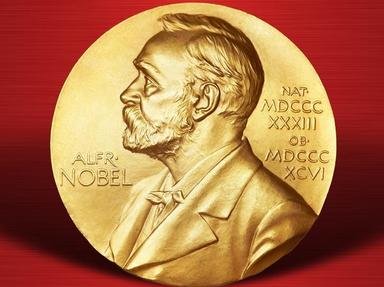Quiz Answer Key and Fun Facts
1. Who was a short story author, poet, and journalist? He was awarded the Nobel Prize in Literature in 1907 at the age of 41.
2. Which writer was awarded the Nobel Prize for Literature in 1925? One of his works was adapted into a successful musical movie in 1964.
3. Which writer was awarded the Nobel Prize for Literature in 1923? He was one of the foremost writers of 20th-century literature, who served two terms as a Senator of the Irish Free State.
4. Who was the first American writer to be awarded the Nobel Prize for Literature in 1930?
5. Who was the fourth woman to be awarded the Nobel Prize in Literature in 1938?
6. Which German-Swiss poet, novelist, and painter was the recipient of the Nobel Prize in Literature in 1946?
7. What British mathematician and philosopher won the Nobel Prize for Literature in 1950, "In recognition of his varied and significant writings in which he champions humanitarian ideals and freedom of thought"?
8. Ernest Miller Hemingway was awarded the Nobel Prize for Literature in 1954. He was involved in a few wars, but in which one was he not involved?
9. What French writer was the recipient of Nobel Prize for Literature at the age of 44 in 1957?
10. John Steinbeck won the Nobel Prize for Literature in 1962. Many of his books were adapted into movies. He was also nominated for an Academy Award for Best Writing for which movie in 1946?
Source: Author
sw11
This quiz was reviewed by FunTrivia editor
ponycargirl before going online.
Any errors found in FunTrivia content are routinely corrected through our feedback system.
